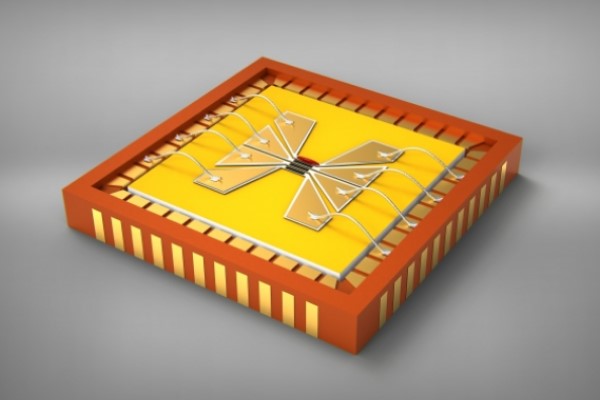Metasurface technology putting the lights out on LCD
Dubbed as the evolution in display technology, Metasurface is looking to bring a new world of untapped potential. San Williams investigates what it will offer and when it’s due to hit the market.
The screen display market has offered various makes over the years with each type offering its own advantages and drawbacks. From this, LCD technology rose to prominence, becoming the leading choice for displays such as TVs and monitors due to lifespan, production costs and energy consumption factors.
ADVERTISEMENT
Despite its widely favoured cross-polarised technology, and the release of multiple follow-up types such as OLED, QLED among other variations, this popular display choice seems to soon be replaced with the breakthrough of metasurface technology.
The next standard in screen display may be just around the corner with the development of a ‘proof-of-concept’ technology that is expected to succeed liquid-crystal displays (LCDs) and light-emitting diodes (LEDs).
Produced by a team of Australian and UK researchers across Nottingham Trent University, UNSW Canberra and the Australian National University, metasurface technology is one hundred times thinner than its liquid-crystal cell counterpart and would offer tenfold the resolution while running on less energy.
“Our pixels are made of silicon, which offers a long-life span in contrast with organic materials required for other existing alternatives,” UNSW nanophotonics team lead researcher professor Andrey Miroschnichenko says.
“Moreover, silicon is widely available, CMOS compatible with mature technology and cheap to produce.”
LCD technology consists of a ‘cross-polarised’ set up which plays a role in managing the device’s power and determining the dimension of pixels, aka the resolution. Engineered metasurface cells would replace the liquid crystal layer and not require polarisers from where half of wasted energy use and light intensity in displays derive.
“We hope this development could generate a frontier technology in new flat screen displays, which had a global market value of about $117 billion in 2020,” Andrey says.
Research to follow the proof-of-concept will be building a large-scale prototype and generating images expected to carry over within the next five years. A successful prototype would then mean the generated high-definition images can be integrated into flat screens for the public. This is expected to happen over the next ten years.
ARC Centre for Excellence in Transformative Meta-Optical Systems (TMOS) and ANU physics professor Dragomir Neshev says current flat screens have reached their maximum capacity, with limited improvement remaining due to its technological constraints.
“Today there is a quest for fully solid-state flat display technology with a high-resolution and fast refresh rate. We have designed and developed metasurface pixels that can be ideal for the next-generation display.” Dragomir says.
In contrast to contemporary screen displays, Nottingham Trent University team member Dr Lei Xu says there’s an untapped potential in metasurface technology.
“There is significant room for further improvements by employing artificial intelligence and machine learning techniques to design and realise even smaller, thinner and more efficient metasurface displays,” Lei says.
Researchers believe that they have paved the way to break a technology barrier by replacing the liquid crystal layer in current displays with this new metasurface technology.
“The most important metrics of flat panel displays are pixel size and resolution, weight and power consumption. We have addressed each of these with our meta-display concept,” lead researcher Mohsen Rahmani says.
“Most importantly, our new technology can lead to a huge reduction in energy consumption, this is excellent news given the number of monitors and TV sets being used in households and businesses every single day. We believe it is time for LCD and LED displays to be phased out like former cathode ray tube (CRT) TVs over the past ten to 20 years.”
Khosro Zangeneh Kamali, a PhD scholar at ANU and the first author of the study says metasurfaces are proven to exhibit extraordinary optical behaviour.
“Inventing an effective way to control metasurfaces is still a subject of heavy research. We have proposed electrically tunable silicon nanostructures, which is a versatile platform for programmable metasurfaces.”
When this metasurface technology finds its way into displays, there should be a shift in the way screens are developed and the price of these units could also drop.
-
ADVERTISEMENT
-
ADVERTISEMENT
-
ADVERTISEMENT
-
ADVERTISEMENT

